Question More, Action Knowledge.
Remember, at QMAK, we don’t just teach; we empower. We don’t just inform; we inspire. We don’t just question; we act. Become a Gold Member, and let’s unlock your child’s full potential, one question at a time.
![]() Picture this: you’re watching a video of people passing a basketball back and forth. Your task is to count how many times the ball is passed. Easy enough, right? But what if I told you that while you were laser-focused on counting passes, you completely missed the fact that a person in a gorilla suit walked through the scene, beat their chest, and then strolled off screen?
Picture this: you’re watching a video of people passing a basketball back and forth. Your task is to count how many times the ball is passed. Easy enough, right? But what if I told you that while you were laser-focused on counting passes, you completely missed the fact that a person in a gorilla suit walked through the scene, beat their chest, and then strolled off screen?
Believe it or not, this is a real experiment, and about half of the participants missed the gorilla entirely!
Welcome to the fascinating world of inattentional blindness, where our brains can miss what’s right in front of our faces when we’re not paying attention to it.
![]()
Inattentional blindness is the failure to notice a fully-visible, but unexpected object or event when attention is focused on something else. It’s not about having poor vision or a lack of intelligence – it’s a natural consequence of how our brains process information.
You see, our brains are constantly bombarded with sensory input from the world around us. To keep from getting overwhelmed, we have to be selective about what we pay attention to. When we’re focused on a specific task or stimulus, our brains filter out other information that seems irrelevant or distracting.
This can lead to some pretty surprising situations, like:
In short, inattentional blindness is a stark reminder that just because something is physically present doesn’t mean we’ll consciously perceive it.
Closely related to inattentional blindness is a phenomenon called absence blindness. This cognitive bias describes our tendency to struggle with recognizing the absence of something. While our brains are great at noticing what’s there, they have a hard time identifying what’s missing.
Imagine you’re at work, and everything is running smoothly. No fires to put out, no urgent emails, no crises to manage. It might seem like nothing special is happening, but in reality, this calm efficiency could be the result of excellent preventative measures and proactive problem-solving. However, because nothing bad is visibly happening, we might fail to appreciate the value of these unseen efforts.
This bias can have significant implications in various aspects of life and business:

2. Overlooking Effective Management: Skilled managers who anticipate and resolve issues before they become apparent often go unnoticed. Their contributions create a smooth work environment, but because problems are prevented rather than solved visibly, their efforts might be underappreciated.

3. Economic Decision-Making: In times of economic downturn, the absence of immediate visible improvement can create pressure for action, even if patience might be the best approach. This can lead to hasty interventions that might do more harm than good in the long run.
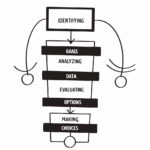
While these biases are normal parts of how our brains work, they can have some serious consequences if we’re not careful.
Some potential risks include:
Accidents and injuries: If we’re not paying attention to our surroundings, we may miss important safety cues or hazards. This is especially dangerous when operating machinery, driving, or navigating busy environments.

Missed opportunities: If we’re so focused on one thing that we miss other relevant information or events, we may lose out on valuable opportunities or insights. Similarly, if we fail to recognize the absence of problems, we might miss chances to capitalize on efficient systems or processes.

Poor decision-making: When we make choices based on incomplete or biased information because we weren’t paying attention to the full picture (including what’s missing), we risk making suboptimal or even harmful decisions.
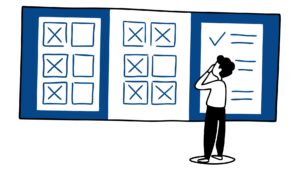
Strained relationships: If we consistently fail to notice important social cues or messages because we’re distracted or preoccupied, we may damage our relationships with others.

Undervaluing silent performers: In a work environment, absence blindness can lead to underappreciating employees who consistently perform well without drawing attention to themselves. This could result in a culture that rewards visible problem-solving over effective prevention.
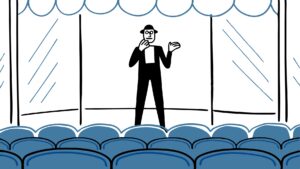
Overreacting to isolated incidents: The difficulty in perceiving the absence of problems can lead to overreactions to rare negative events. For instance, a company might impose restrictive policies on all employees due to a single misuse of company resources.

So how can we avoid the pitfalls of these biases and make sure we’re not missing crucial information – whether it’s present or absent?
Here are some strategies:
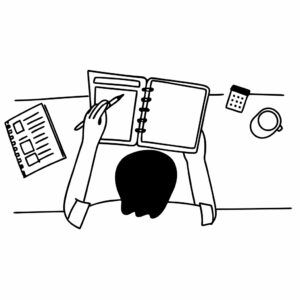
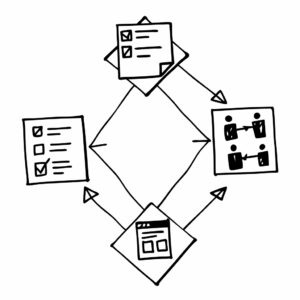
Even when you’re focused on something specific, make a habit of periodically scanning your surroundings for any changes or notable events.
This can help you catch things that might otherwise slip by unnoticed.
In a business context, regularly review processes and systems to identify potential issues before they become problems.
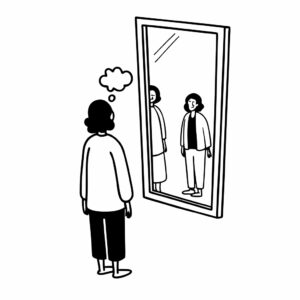
Our expectations and beliefs can heavily influence what we pay attention to and what we overlook.
If you go into a situation expecting to see something, you may miss other relevant details or fail to notice important absences.
Try to approach situations with an open and curious mindset.

Developing a regular mindfulness practice can help train your brain to be more present and attentive.
Simple exercises like deep breathing, body scans, or noting your thoughts can improve your ability to notice and process information.
Mindfulness can also help you become more aware of the absence of things, enhancing your ability to appreciate preventative measures and efficient systems.

When you’ve been focusing intensely on something for a while, your attention can start to fatigue and your risk of inattentional blindness increases.
Taking regular breaks and switching between different types of tasks can help keep your mind fresh and alert.

Creating and consistently using checklists can be a valuable tool for combating both inattentional and absence blindness.
By explicitly listing essential elements or steps in a process, checklists provide a tangible reminder to look for potential omissions or errors.
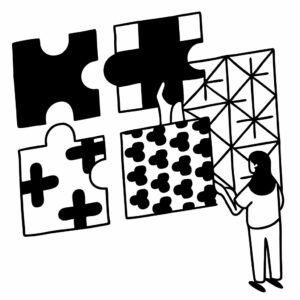
Exposure to a wide range of situations and outcomes builds a richer mental database of patterns.
This expanded knowledge base enhances your ability to detect anomalies or deviations from expected patterns, serving as an early warning system for potential problems.
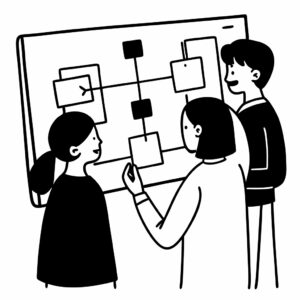
Make a conscious effort to consider what might be missing or what could go wrong, particularly in situations where prevention is key.
This shift in perspective can help you identify and address potential issues before they escalate.
Helping children understand these concepts can set them up to be more aware and attentive in their daily lives. Here are some age-appropriate ways to introduce the ideas:
Teacher’s Note: By building an awareness of these biases from an early age, we can equip the next generation with the tools to navigate a world full of competing stimuli, potential hazards, and unseen benefits.
While these biases are often framed as cognitive weaknesses or risk factors, understanding them can also be harnessed for positive personal and professional outcomes.
Here are some ways to use an understanding of these phenomena to your advantage:
At the end of the day, inattentional and absence blindness remind us that our awareness has natural limits. By understanding these cognitive blind spots, we can develop strategies to see both what’s present and what’s missing, leading to better decision-making and more comprehensive understanding.
These biases aren’t flaws to fix but opportunities to grow. By acknowledging their existence and working with them mindfully, we can expand our awareness and catch more of what life presents.
Remember, sometimes the most important things to notice are either hiding in plain sight or missing entirely from view.
Objective: To demonstrate how focusing on one aspect of an image can lead to missing other details.
Objective: To show how expectations can influence what we pay attention to.
Objective: To practice scanning the environment and noticing details.
Objective: To illustrate the limitations of attention and the risks of inattentional blindness.
Objective: To cultivate mindfulness and situational awareness.
The Prestige offers a masterful exploration of inattentional blindness through the art of stage magic. As professional magicians compete to perfect the ultimate illusion, the film demonstrates how our minds can completely miss what’s happening right before our eyes when our attention is deliberately directed elsewhere.
Through the recurring theme that “you’re not really looking,” the film reveals how magicians exploit our brain’s tendency to filter information and focus only on what we think is important.
The famous quote “the closer you look, the less you see” perfectly encapsulates the concept of inattentional blindness.
Students will discover how their own minds can be tricked into missing obvious details, leading to rich discussions about how this cognitive bias affects our daily decision-making and perception of the world around us.
(Verse 1)
There’s a gorilla in the room
But we’re too busy to assume
That something’s there that we can’t see
Inattentional blindness, the key
(Chorus)
Inattentional blindness, it’s a part of our minds
We focus on one thing, and miss the other signs
But we can train our brains, to see what’s really there
Inattentional blindness, we must be aware
(Verse 2)
Accidents and missed chances
Decisions based on glances
We need to pay attention
To avoid all this tension
(Chorus)
Inattentional blindness, it’s a part of our minds
We focus on one thing, and miss the other signs
But we can train our brains, to see what’s really there
Inattentional blindness, we must be aware
(Bridge)
Scan the environment, take a break
Mindfulness, for goodness’ sake
Be aware of your biases
And teach the kids, in different sizes
(Verse 3)
Harness the power, for personal growth
Minimize distractions, that’s the oath
Curiosity and a growth mindset
Multiple perspectives, don’t forget
(Chorus)
Inattentional blindness, it’s a part of our minds
We focus on one thing, and miss the other signs
But we can train our brains, to see what’s really there
Inattentional blindness, we must be aware
(Outro)
So next time you miss, what’s under your nose
Celebrate the fact, that you noticed and rose
Flex your attentional muscles, see the world anew
Inattentional blindness, it’s up to me and you
With practice and intention, possibilities unlock
Inattentional blindness, let’s beat the clock!
Remember, at QMAK, we don’t just teach; we empower. We don’t just inform; we inspire. We don’t just question; we act. Become a Gold Member, and let’s unlock your child’s full potential, one question at a time.